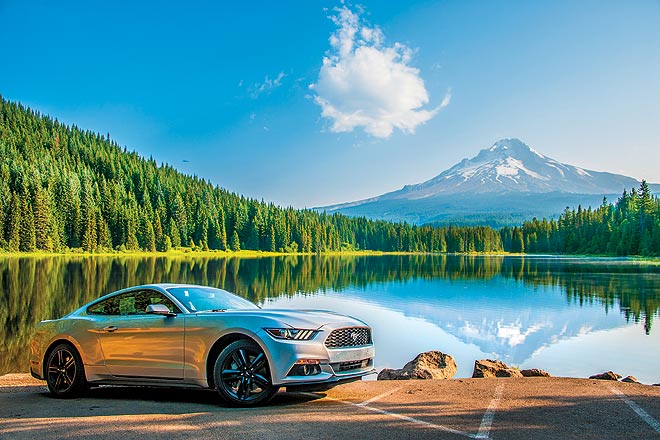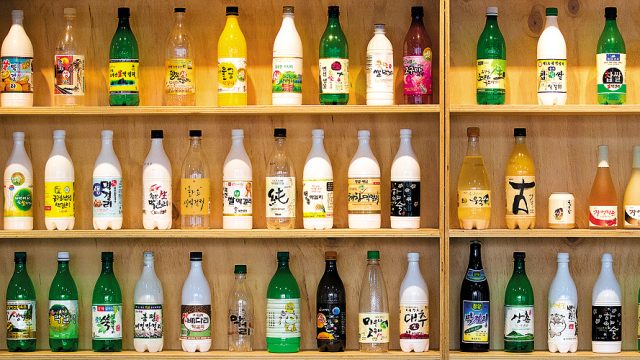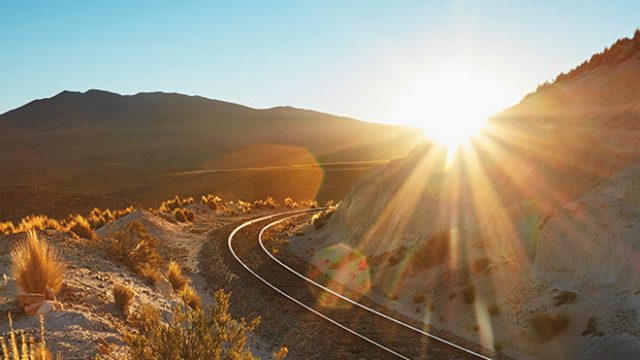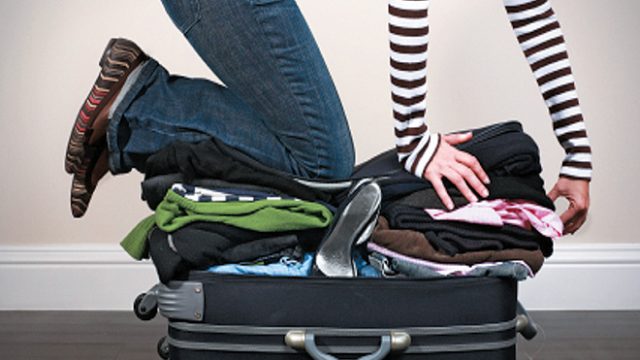What is that one all-American iconic brand that gets your heart racing and induces a palpable
San Francisco, California’s city by the bay, is one of my favourites in the US; and there are some places there that I never tire of visiting. Curiously, they all involve food or drink. The first is the Ferry Building, which is a sort of pilgrimage for me because I feel completely at home amidst the vibe generated there from all the little eateries within the building. The two establishments that I patronise without fail are the Blue Bottle Coffee Shop, where the coffee is worth waiting in the serpentine queue, and Out The Door for its pork buns and Vietnamese crispy rolls. Right next to it is the very classy and award-winning Slanted Door Restaurant.
Besides these, on Tuesdays, Thursdays and Saturdays, the front of the Ferry Building comes vibrantly alive with the Ferry Plaza Farmer’s Market. You could get yourself a wholesome meal just from snacking on the fresh and organic produce on sale at the stalls.
The drive from San Francisco to Los Angeles along California’s State Highway 1 makes for one of the West Coast’s more popular road trips. The road north from San Francisco, taking in some of California and Oregon’s country roads and National Parks, is a gem if you want to get away from the crowds, surrender yourself to tranquil scenes, go on scenic treks, take in the best wineries in the west and, of course, drive on fantastic roads. And the route back via Oregon and the northern California coast affords gorgeous views of fiery sunsets.

We’d decided to do this route this time around, but first we had to equip ourselves with something that would be absolutely American and totally fun at the wheel. Because, let’s face it, hiring a car that is characterless and no fun to drive for a road trip with good driving roads is like going to the best steakhouse in town and ordering yoghurt!
There are few cars that epitomise American motoring like the Ford Mustang, a car that completes half a century, this year, of being in continuous production. Equipped with a new engine that is almost as good as the V8 and yet delivers fuel economy, the Mustang has suddenly become very affordable to hire.
We drove north from San Francisco, the Mustang leaving behind decibels of delightful exhaust burble in its wake, and headed towards the Lassen Volcanic National Park via US Highways 80, 505 and 5.
Established in August 1916, this park gets its name from Lassen Peak. This volcanic mountain last blew its top on May 19, 1915, and has remained quiet since 1921, but it is still considered an active volcano. Today, it stands serene among 430 sq km of volcanic splendour where steam hisses out from the bowels of the earth, mud boils like porridge that’s being slow-cooked, and the scent of sulfur is very prevalent at some places.

We arrived in the afternoon and drove straight to the Kohm Yah-mah-nee Visitor Center through the park’s southwestern gate. This is a good orientation point and has a road guide to the Lassen Volcanic National Park and other useful information. It also runs a 20-minute documentary throughout its opening hours, which explains the 1915 eruption.
We collected the map, saw the movie and drove to Chester 50km away to spend the night. The next morning we were back at the park at first light and largely had it all to ourselves. We followed California Highway 89 through the pass, and thanks to the brochure, found interesting places to stop at.
The first was Sulfur Works, a bubbling hotpot of hydrothermal activity with steam hissing; the smell of sulfur hung in the air. The next was Bumpass Hell Overlook, where a huge boulder the size of a little cottage tells you about the power that Mother Nature can unleash: the boulder had flown many feet into the air during an eruption.
Lassen Peak is visible all through the drive, but the best view is to be had from the Lassen Peak Parking area, the highest point of the drive, at 8,512 feet. I would have liked to climb the peak, but it requires a full day and we were short on time.
We continued through the park, the Mustang’s burble sometimes causing grazing deer to look up in surprise, and then headed along the Volcanic Legacy Highway to Mount Shasta. I had been here a few years ago and specially drove through again for the scrumptious burgers that this town’s Black Bear Diner serves up. The 200 km or so from Kohm Yah-mah-nee to Mount Shasta had taken us well over 7 hours since there had been so much to see.
After lunch we got back onto the Interstate 5 (I-5) and headed north towards Eugene in Oregon just in time to catch a local baseball game. It was quite the complete American experience with stretchy cheerleaders, masquerading mascots, big burgers, watery beers and, oh, some baseball as well.

Eugene is a university town that is eclectic and exciting and bursting with energy. Its Starbucks outlets have huge study tables where students sit for hours completing college projects latched onto the free wi-fi. The town hosts boisterous festivals, has outstandingly fine restaurants and a quirky art scene. It also has miles of lovely walks along the Willamette River, which flows through the city. This was our second longish halt.
Eugene is also home to Hayward Field, one of America’s best-known track-and-field stadiums. Besides being the training ground for many Olympic athletes, it is celebrated as the place where Bill Bowerman invented new-age shoe soles using a waffle iron and went on to co-found Nike. He was a track-and-field coach at Hayward Field and today it is hallowed ground for aspiring athletes. Interestingly, right across Agate Street from this field where Nike was born, is the Museum of Natural and Cultural History, where one of the most eminent exhibits is a pair of 10,000-year-old sandals. These were excavated in 1938 by archaeologist Luther Cressman from a volcanic cave in Fort Rock, some 230 km to the east of Eugene. Because they were encased in volcanic ash, they were well-preserved.
We left Eugene awed by its prettiness and satiated by its fine culinary scene. Our plan was to stop for lunch in Portland and then head east towards Mount Hood. But then, we realised that Portland is quite the craft beer hotspot, and so we went on a sampling walk and came back swaying so much that driving was out of the question; we spent the night in Oregon’s capital.
The next day was probably one of the highlights of our drive because we drove through the historic Columbia River Highway Scenic Byway. This was the first such to be constructed in the US and is a National History Landmark. Construction on this road, which runs along the Columbia River Gorge, started in 1913, overseen by engineer Samuel C. Lancaster, who was very keen on preserving the natural beauty of this region. He planned it so that the road would make many pretty viewpoints accessible, and showcase the splendid waterfalls that are the glory of this route. In the western US, this scenic byway is considered the king of roads, and driving along it, we had to agree that the sobriquet was well-deserved. The views out over the gorge are stupendous and the falls—especially Bridal Veil and Multnomah Falls, with arched bridge midway—are breathtaking to behold as they gracefully drop down in a shimmering cascade of white.
The mighty Columbia River runs along this route (mainly along US Highway 30) and forms the border between the states of Oregon and Washington.
This is the farthest north we went before turning south onto Highway 35 and heading towards Mount Hood, Oregon’s highest peak, which wears a snowcap almost all the year round. It stands so tall that it can be seen from all over northern Oregon.
We spent three days here, exploring the local region, which was resplendent with wildflowers and clear blue lakes and ponds shimmering in the sunlight with the magnificent dome of the mountain reflecting in the serene waters.
Besides exhilarating treks up Mount Hood and around Mirror Lake, we spent two days camping at the campsite beside Lake Trillium, about 27 km from Mount Hood Village, which marked another highlight of this trip. I remember waking up one morning and walking groggy-eyed to the lake; the sight that greeted me refreshed me like caffeine never could. My friend had brought the car by the lake to unload some food for breakfast, and it was standing there by the lake, with the mountain and the conifers by the periphery reflected in the still waters, with one solitary cloud hanging in the misty blue sky. It is a scene that is etched in my mind and absolutely encapsulates this road trip.
From Mount Hood, we drove 115 km west along the US 26, the I-205 and Oregon State Highway 99W to arrive at McMinnville, home to the Evergreen Aviation and Space Museum. This is a very good museum to spend half a day in especially if, like me, air travel fascinates you. Howard Hughes’ magnificent Spruce Goose, the largest airplane ever constructed and flown only once, stands here.
Our route back to California took us via the splendid Oregon coast, with a night halt at Newport by the Pacific.
Australian film director Baz Luhrmann once sang a song called Always Wear Sunscreen, a sort of musical philosophical discourse on life. A verse from it goes: “Live in New York City once, but leave before it makes you hard; live in northern California once, but leave before it makes you soft.”
I had always wondered about the northern California bit, and on this trip, I realised just what it meant. The people we encountered on our drive through southern Oregon and northern California—at fuel stations, restaurants, grocery stores and on walks and treks—were so warm and friendly that living here would make you very trusting and kind or—“soft”.
Our last stop before heading back to San Francisco was Crescent City, named after the crescent-shaped stretch of sandy beach from where gorgeous sunsets can be viewed. It was the perfect end to a great road trip before starting the long slog back to San Francisco, traffic and urbanity.
The information
Getting there
There may be more affordable flying options, but Etihad Airways (etihad.com) offers unmatched convenience in flying to San Francisco. It has good connectivity via Abu Dhabi from many Indian cities. But what makes it convenient is the US Customs and Immigration pre-clearance in Abu Dhabi. This means all entry formalities for the US are done in Abu Dhabi before you board, so once you arrive in the US, you disembark, pick up your luggage and waltz out of the airport. Economy round-trip fares start at about â?¹85,000.
How to do it
Look up nps.gov and discoveramerica. com for more on the National Parks and for assistance in planning this trip, including pit-stops. We didn’t make any advance bookings; instead, we would decide where we wanted to stop and then book a few hours in advance using booking.com. Mostly we stayed at Best Western or Econo Lodges, where rooms were available for $90-120 per night.
The Drive
All major car rental companies (Hertz, Avis and National) have huge depots at San Francisco airport and offer the Ford Mustang for hire. Specify the exact model you want to hire when you’re booking online in advance. Try kayak.com for deals or for cars that are cheaper to hire.
The Ford Mustang will cost approximately $850-1,000 to rent for 11 days, which is how long this trip will take. The whole drive was about 2,700km and a realistic fuel economy with a car like this would be about 9kmpl, which equates to about 300 litres of fuel. That will cost an additional $450. The expenditure on car hire and fuel will come down with a smaller car, but it will also take away most of the fun from this road trip.
A local T-mobile SIM card works well on this route; Google Maps will help you navigate.
California
driving holiday
Ford Mustang





